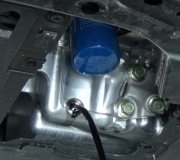It sounds like you have the location of the noise source identified already but there's a tool you might consider trying. It's called the "Chassis Ear". That's a set of six microphones, a switch box, and head phones. You clip the microphones to suspect parts, then switch between them while driving and listening. I used one at times when doing suspension and alignment work and trying to find the source of squeaks and rattles. You might find one of these tools at an auto parts store that rents or borrows tools.
One strange thing I've run into multiple times is a squeaky wheel cover. In fact I worked on a huge motor home tonight that has one making noise when the wheel is turning and flexing. A light coating of grease where it attaches will solve that.
If you replaced the rotors three months ago and they were made in China, they are likely warped. When we make parts out of cast iron, we throw them outside for three months to "age" before they get their final machining. There's nothing wrong with Chinese rotors but they cast 'em, pack 'em, and ship 'em, then they age on your car. If warpage develops usually all that's needed is a light machining and they'll be fine. You won't find that by measuring for thickness variation with a micrometer. You have to snug the lug nuts, then measure the runout with a dial indicator while you spin the rotor. If you do find some runout, measure it on the center part that contacts the wheel. If you find runout there too it's not due to a warped rotor. It's due to rust or scale falling between the rotor and hub. That has happened to every brake specialist at some point.
Wednesday, June 19th, 2013 AT 11:33 PM


